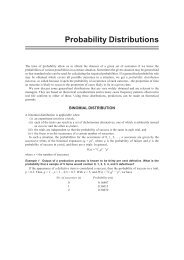International-Business-Dr-R-Chandran-E-book
International-Business-Dr-R-Chandran-E-book
International-Business-Dr-R-Chandran-E-book
You also want an ePaper? Increase the reach of your titles
YUMPU automatically turns print PDFs into web optimized ePapers that Google loves.
37<br />
<strong>International</strong> <strong>Business</strong>- <strong>Dr</strong>. R. <strong>Chandran</strong><br />
services to the international business community. Thus, a firm which<br />
enters Africa or the CIS countries has to necessarily depend on other<br />
countries for banking services.<br />
5. Purchasing Power<br />
Another major determining factor for any international business unit<br />
is whether the people can afford to buy for a product is low. In other<br />
countries like Saudi Arabia, both the income and willingness to pay<br />
for the product are high. In the Scandinavian countries the per capita<br />
income is very high and they are ready to pay a premium price for<br />
highly sophisticated items. However, the low population is a limiting<br />
factor.<br />
6. Foreign Exchange<br />
Another determining factor in international business is whether<br />
tforeign exchange facilities are available transactions. Although more<br />
than 70% of the countries in the world do not have foreign exchange<br />
reserves, the majority of them are becoming liberal in transacting<br />
foreign exchange as a long term strategy for their future economic<br />
development. Against this, some countries with surplus foreign<br />
exchange reserves do not permit free movement of the currencies.<br />
Such countries that have restrictions in repatriation of foreign<br />
exchange will not be attractive to international business firms.<br />
Therefore, countries with sufficient foreign exchange reserves, a<br />
liberal policy on repatriation and which have a demand for the<br />
products and services are an ideal destination for any company to do<br />
international business.<br />
7. Income Levels<br />
Economies are classified into low income and high income<br />
economies. Industrialized nations are high income economies and<br />
enjoy a high per capita income. Companies manufacturing or<br />
marketing premium quality or high technology products have an easy<br />
entry into such advanced countries with the proper strategies.<br />
Developing countries, which are the low income economies, are price<br />
sensitive. Many of them are under pressure from high population,<br />
unemployment and lack the vision to industrialize fast. Still they need<br />
only primary goods and rated one amongst less developed countries.<br />
Differences in the income levels may limit the involvement and<br />
investments. Sometimes, in a densely populated country, a small<br />
Only for Private Circulation





